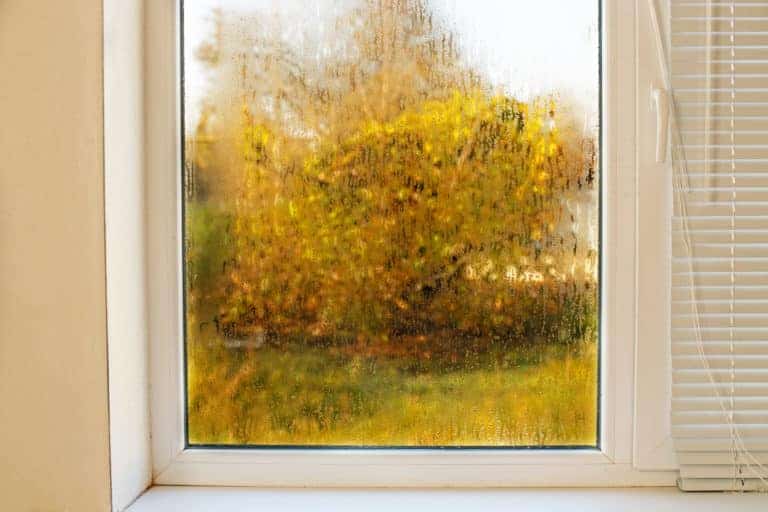When you think about choosing windows for your home, you might picture big panes of glass. And you’d be right—the type of glass you select is undoubtedly critical. But that’s not all you need to consider.
Windows are more than just pieces of glass through which we view the outside world. They protect us from the weather. They keep heat in (or out). And because not all windows and frames are built the same, they can drastically change the look of a home’s exterior and increase curb appeal.
Maybe you’re building a home and looking to make the right choice from the get-go when buying windows, or maybe you’re looking into replacing window glass. Whatever the reason, if you’re wondering how to choose windows, you’ve come to the right place. We’ve put together this guide to help you make an informed decision.
Reasons for New Windows
There are several situations that might call for new or window replacement. The most common reasons to be looking for new replacement window options are:
- Replacing damaged or unsafe windows – If you’ve already researched window repair and have deemed it an unlikely solution, you may need to replace your cracked or leaking windows. Find more here on where to repair or replace windows. Gaps between windows and frames allow insects to enter and reduce the effectiveness of the seal.
- Improving your home’s energy efficiency – Even if all of your windows are in impeccable shape, you could still benefit from window replacement. The National Fenestration Rating Council affirms that the average American household spends up to $2,000 a year on energy bills, and 45% of that number is for heating and cooling. By switching to energy-efficient window options, you could save about $300 per year, depending on where you live. Learn more about energy-efficient windows and doors here.
- Building a new home – Perhaps this goes without saying, but if you’re building your dream home from the ground up, you’re going to need windows! It’s easy to overlook windows when you’re focused on foundation and roofing, and yet window style is a crucial part of the design process of your home’s exterior.
If you fall into any of the above categories, keep reading to find out which windows, frames, and operating types best suit your needs.
Types of Glass
When it comes to the glass itself, the choices may feel overwhelming. Dual panes or triple panes? Annealed or laminated?
With so many options, it can be hard to know what’s best for you. Let’s look at the most common glass types in home windows to help clear things up.
Insulated Glass
When someone refers to double-glazed or triple-paned windows, they’re talking about insulated glass. This variety of glass is made by taking two or three pieces of glass and leaving a small, hermetically sealed space between them. More distance between the inside of your home and the outdoors means better insulation from external heat or cold.
The space between the panes can be vacuum-sealed air, or it can be a non-toxic gas like argon or krypton. Gas-filled glass can be more expensive, but it also insulates better, which can bring your utility costs down.
Laminated Glass
Laminated glass holds together when shattered, making injuries from broken glass less likely. An inner piece of clear vinyl holds the two layers of glass together if breakage occurs.
This variety of vinyl window glass is ideal for skylights and hurricane or tornado-prone areas since shards of glass won’t be a safety concern, even if the window does break.
Annealed Glass
Also called single pane glass or plate glass, windows made from annealed glass are not as thick as the above options. Due to the manufacturing process of annealed glass, it can be more affordable than other varieties, but may not insulate as well.
Low-E Glass
Low-emission glass (called Low-E for short) has an incredibly thin coating of metal oxide. The clear coating allows light to enter the home while blocking heat during the warmer months. When it gets cold out, these windows also stop heat loss.
Low-E glass windows can lower heating and cooling costs, and reduce your environmental footprint by conserving the energy used by air-conditioning or furnaces.
Types of Window Frames
Choosing the right window doesn’t stop at the pane of glass. Having the right window frame is just as important, much like choosing the perfect window frame to display your favorite family photo.
The window material you choose for your frame will impact the efficiency and the aesthetic of your window, so you’ll want all the facts before you make your decision. Luckily for you, the facts for the most popular frames are right here.
Wood Frames
Wood is prime material for a window frame, both in terms of insulation and aesthetic value. With that said, wood frames require a decent amount of maintenance, but installing vinyl or aluminum cladding (think of this as a protective layer) can help reduce the need for upkeep. Note that metal cladding may reduce the overall insulation of a wood frame.
Drier climates are best for wood windows, as they can rot over time in humid areas. Nonetheless, a well-maintained, good-quality wood frame will last decades.
Fiberglass Frames
Built from a mix of polyester resin and glass fibers, fiberglass window frames are a solid choice. These frames come with air cavities that can surpass the thermal performance of wood when filled with insulation.
While a bit costlier, fiberglass frames are less conductive (and therefore energy-efficient), durable, and relatively low-maintenance.
Vinyl Frames
Often made of polyvinyl chloride (PVC), these frames are built to resist moisture and sunlight. They don’t need to be painted, meaning maintenance is minimal. Like their fiberglass counterparts, vinyl frames have cavities that can be filled with insulation should your climate call for it.
Affordable and reliable, a vinyl window frame is an excellent budget choice that still looks stylish.
Composite Frames
The term “composite” refers to a mix of materials, generally particleboard or other scrap wood and plastic resins. Composite frames insulate similarly to the wood frames they resemble but are less prone to rotting.
As another benefit, composite frames are relatively eco-friendly, as the material used to make them is often recycled or repurposed.
Metal Frames
Frames made of aluminum or other metals are robust and require almost no maintenance, making them an ideal choice for hard-to-reach windows. Metal is also perfect for rainy, humid climates and hurricane zones.
The downside is that metal conducts heat better than the other materials listed here, which means metal frames insulate poorly. To combat this, a thermal break (a strip of plastic used for insulation) can be installed between the inside and outside window frames.
Operating Types
Yet another thing to consider is the way your window opens and closes. Different operating types can have different levels of energy efficiency. There are a few categories to explore.
Hinged Windows
Windows that open on a hinge are typically closed with a latch or handle. Because the window is pushed or pulled tightly against the frame, air leakage is minimized. The following are common examples of hinged windows:
- Awning – Hinged at the top, opens outwards.
- Hopper – Hinged at the bottom, opens inwards.
- Casement – Hinged at the sides.
Sliding Windows
Sliding windows are either single (where one-half slides but not the other) or double (where both halves slide open). These windows leak air a little more than hinged windows, making them slightly less efficient. Examples include:
- Single- or double-sliding windows (open by sliding horizontally)
- Single- or double-hung windows (open by sliding vertically)
Fixed Windows
A fixed window does not open. Ultimately, this is the most airtight of all options, but fixed windows are not ideal in spaces that require ventilation. Additionally, this operating style is less suitable where you may need an emergency exit.
Why The Right Window Matters
As you can probably see, choosing the right window is more than just drawing names out of a hat. You can’t pick a window based on its look alone; a fair amount of consideration is necessary to ensure your window choice is the right fit for your home and your needs.
Upfront cost, energy savings, and usage are all part of the puzzle, and it’s worth spending the time now to choose appropriately.
To summarize, these are the key factors to keep in mind when shopping for new windows:
- Climate – Do you live in a warm, dry environment? Or do you see a lot of rain and cold in the forecast? Weather and climate play a vital role in window and frame choice, so you need to base your decision around what makes sense for your region. What works for an Alaskan cabin won’t be the same as a Florida townhouse.
- Durability – How often do you want to replace home windows and frames? What amount of maintenance are you willing to do? Ask yourself these questions during your research, and the perfect windows should present themselves to you.
- Style – Function is crucial, but let’s face it—your home is your nest and your biggest investment. You want it to look good, too! Choosing windows that work with your house’s aesthetic is important as well, so be sure to think about color and material alongside functionality.
We know choosing the right window can be tricky, but as long as you understand your needs and preferences before you set out to purchase, you’ll have the perfect window installed in no time!
Sources:
National Fenestration Rating Council. Interested in how much energy-efficient windows could be saving you? www.nfrc.org/windows-doors-skylights/window-savings-estimates/
Energy.gov. Window Types and Technologies. www.energy.gov/energysaver/window-types-and-technologies




